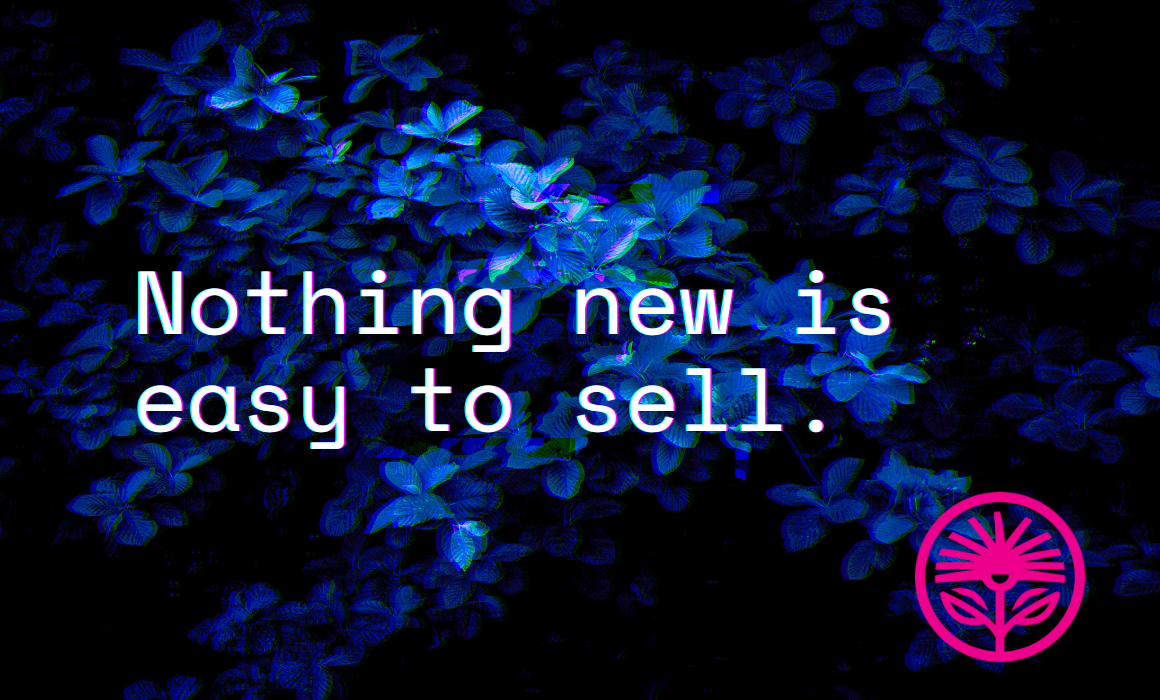Nothing new is easy to sell — Kelford Labs Weekly
Fight fear with familiarity.

I’m reading a biography of Alexander Graham Bell and I love learning about how new technologies are usually received:
Poorly.
I didn’t know, for instance, that the telephone was initially dismissed as useless because it didn’t keep a written record.
According to Charlotte Gray in Reluctant Genius, “A Western Union electrician sent the company president a memo suggesting that ‘[t]his telephone has too many shortcomings to be seriously considered as a means of communication. The device is in inherently of no value to us.’”
But the telephone is useful, right? So obviously once people realized that they got on board, right?
Right?
Nope. Once it proved itself useful, it then became evil.
My favourite quote is from the Providence Press, which suggested that “[i]t is difficult to resist the notion that the powers of darkness are in league with it.”
Now, as a millennial, I do sometimes think of phone calls as evils to be avoided, but that’s probably not what they meant back then.
And, speaking of things we don’t mean, I want to let you know that this isn’t going to turn into a screed about AI.
This newsletter isn’t actually about technology at all. It is about marketing.
See, the thing that got the telephone popular wasn’t its inherent, obvious utility. It wasn’t some immediate, organic, viral success.
A great invention doesn’t market itself, it must be marketed.
I know that sounds crass, but it’s the truth. It’s not just lack of utility that kills technologies or products or services, lack of familiarity can be deadly, too.
Unsurprisingly, something no one else is doing looks dangerous to us, and something that everyone else is doing looks safe.
So when we have something new to share, even if it’s clearly, obviously useful to its inventor, provider, or producer, its inherent newness makes it look unsafe.
In The Influential Mind, Tali Sharot says that “in the face of apparent consensus, only about 30 percent of individuals will voice a different view.”
People don’t like what isn’t familiar, what isn’t accepted by others, and that includes the products and services we’re selling. Especially if they’re new or novel, or if they in some way contradict the accepted standard or “best practice.”
So we can think about our marketing, then, as a way of intentionally building familiarity with our audience.
We can think of it as moving them one step closer, one step at a time, to our business by helping them become more comfortable with us.
This is why we developed the Marketing Rangefinder, incidentally. It walks entrepreneurs through the “distances” between them and their ideal clients and helps them create marketing content that appeals and attracts at each one.
(If you or your team would benefit from a Marketing Rangefinder workshop, where you’ll learn what to say to demonstrate your value at every distance, just reply to this email or send us a message).
That’s why I enjoy this story about Teddy Roosevelt in Doris Kearns Goodwin’s The Bully Pulpit:
When he was building his political career, Roosevelt would go around to various clubs and associations where important people gathered so he could, as he said, “begin to live down in the other’s mind what Bret Harte has called ‘the defective moral quality of being a stranger.’”
So, taking that lesson, it means if we have something new to sell (even if it’s only new to the people to whom we want to sell it), we have to overcome that same quality.
We have to go from strange to familiar.
No matter the value, no matter the inherent utility.
But I don’t think that means plastering the environment with untargeted advertising, or trying to persuade or convince people who don’t care about us.
I believe it starts by focusing on the people who already want what we’re selling, who already have demand in their life or work for our solution.
The telephone took off, in part, because of where it was promoted: at technological fairs, at gatherings for those interested in language and speech, at the places where people interested in that sort of thing could be found.
And what did they do? They demonstrated it, they let people hear the magic for themselves.
In his memoir, My Life in Advertising, Claude C. Hopkins said bad marketers “will spend fortunes on advertising to urge people to buy without seeing or testing.” But even though demonstrations can be costly, “persuasion alone is vastly more expensive.”
Slowly building familiarity with an audience or prospect can feel like a waste of time, or needlessly cautious. When we have something valuable to sell, we want to get out there and sell it.
But I signed up for a trial of some software last week and within a couple hours I’d received two emails and a phone call from their sales team. My thought was not, “How wonderful,” but, “Are you kidding me?”
I hadn’t even had the chance to check out the product and I was already feeling like I was getting shoved down a sales funnel.
I’m sure their approach works for some buyers, enough that it might even be worth annoying a few people like me. But I don’t think buyers of specialized, high-end, high-value products or services like being treated that way.
I know I don’t. And because that’s also what I sell, I don’t want my own marketing to feel that way, either.
Because trying to jump from unfamiliar to “pay attention to me right now” too quickly can easily make customers run the other way.
So when we produce marketing materials that only allow the customer to choose between buying right now or not buying at all, we’re depriving them of the opportunity to get comfortable with the idea, to become more familiar with our value.
That’s why I recommend making “middle step” content, the stuff that lets a prospect dip a toe, kick a tire, or simply browse.
The frustrating fact of the matter is that, no matter how obviously, inherently amazing and useful and valuable our product or service, if it’s new, it’s scary.
And if it’s scary, it takes time to get used to it.
To see and experience its value and its worth.
Remember: familiarity is built, not bought.
So make sure you’re giving your prospects the time, space, and content in which to build it.
Reply to this email to tell me what you think, or ask any questions!
Kelford Inc. shows experts the way to always knowing what to say.



